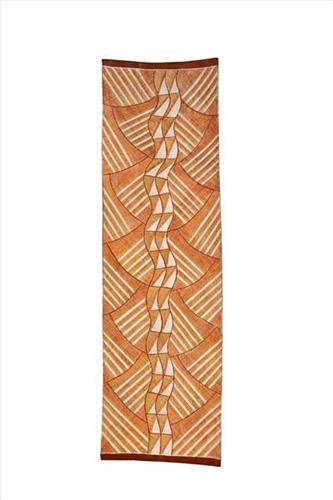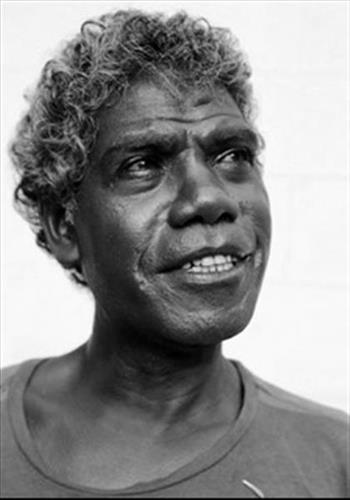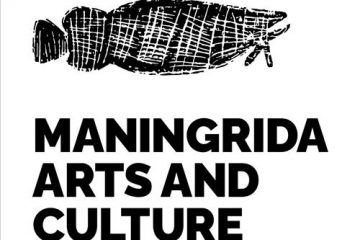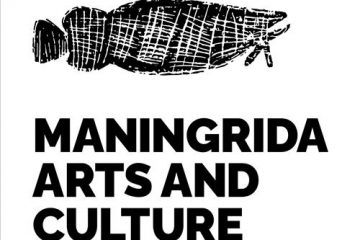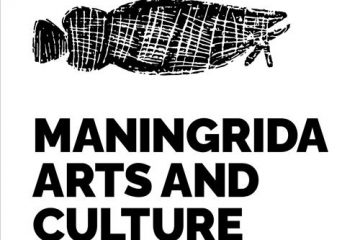Biography:
Samuel Namunjdja was born in West Central Arnhem Land in 1965. A member of an artistic family, Samuel was taught to paint the stories of his clan by his father, Peter Marralwanga, a distinguished painter.
When in his 20s, Namunjdja won the Rothmans Foundation Award for Best Painting in a Traditional Media at the National Aboriginal Art Award in 1993. He followed up with a high commendation in 2003 by winning the Telstra Bark Painting Award at the National Aboriginal and Torres Strait Islander Art Award in 2006.
Samuel held his first solo exhibition at Niagara Galleries in 2004, and has participated in more than 30 important group exhibitions as far afield as Slovenia, Japan, France, UK and USA since 1988. In addition to being a regular finalist in the National Aboriginal and Torres Strait Islander Art Awards, he was also shown in the important cross-cultural Living Together is Easy a joint exhibition at the Contemporary Art Centre, Japan and the National Gallery of Victoria, Melbourne. His work was also included in the seminal Crossing Country retrospective curated by Hetti Perkins for the Art Gallery of New South Wales, Sydney.
A common theme of Samuel Namunjdja’s work is the kunkurra or wind dreaming. These paintings depict not only the spiralling winds and cyclones common in Arnhem Land, but also refer to Bilwoyinj, a site near Samuel’s clan estate. At this place, it is said that a father and son, important creation beings known as na-korrkko in the Kuninjku language group, hunted and ate a goanna, leaving behind some of the fat which became the rock salt that can be found at the site today. Bilwoyinj is also the ceremonial ground for Yabbaduruwa, a major ceremony which is concerned with matters of initiation, land ownership and the cycles of regeneration of man and nature. Other favourite subjects are the mimi spirit figures, Ngalyod rainbow serpent and the Namarrkon lightning man. Namunjdja paints not only these traditional stories, but also looks to less sacred surroundings and everyday activities such as fishing for yabbies, and other animals and plants.
Namunjdja produces a particularly fine style of rarrk in the West Arnhem Land style. His detailed application of the ochre creates a delicate and lyrical surface. There is movement, life and depth in the work.
The artist’s new bodies of work have been presented at Niagara Galleries in solo exhibitions since 2004. Most recently, Namundja’s work was curated into the Sentient Lands exhibition (2016) at the Art Gallery of New South Wales. His work can be found in numerous collections including the Kluge Collection in the USA, The Kelton Foundation in USA, Musee des Confluences in France and locally at the Art Gallery of New South Wales, National Gallery of Victoria, and the Queensland Art Gallery.
